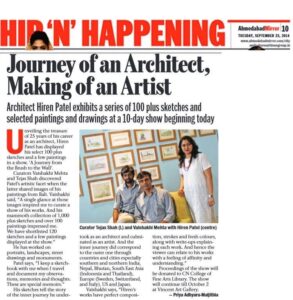To make restoration of Bhadra Fort and its surroundings more meaningful, historians from Khadia Itihas Samiti – an organization upholding the cause of conservation of heritage of Walled City since last two decades, have come forward with a set of recommendations.
The restoration work at the fort is to start from today, on the occasion of Republic Day. Itihas Samiti members submitted their recommendations to Bhavesh Mehta, visiting faculty at Cept and restoration architect linked with the Bhadra Fort restoration project.
Mehta said, “We are mulling to involve historians, residents, pedestrians in the restoration of the fort. The European model of consultative restoration is the best approach to conserve historically sensitive live monuments like this.” Mehta has worked in Europe for 14 years and has worked in conservation of Belgium’s Brugge – UNESCO world heritage city and has restored various heritage structures in Mechelen town in Belgium.
Ashutosh Bhatt, founder and secretary of Khadia Itihas Samiti, says, “There are several significant symbols at the fort which form a vital link with the history of Ahmedabad. These include the caved hole (gokhalo) where there is a constant flame (akhand divo) – a sign that has kept the Laxmi mythology alive, shrine of Kotwal Ahmed Basheer near Bhadrakali temple and marble plate on the fort installed during Maratha rule which states that daughters are a heir to father’s property – such small but vital signages must be carefully retained and incorporated with the new design.”
For authentic restoration of the live monument which is not a museum but live document of centuries and is part of the memories of millions of city dwellers, there is a need of consultative conservation approach, advised Munindra Joshi, former assistant director of State Archaeology department and member of Khadia Itihas Samiti.

